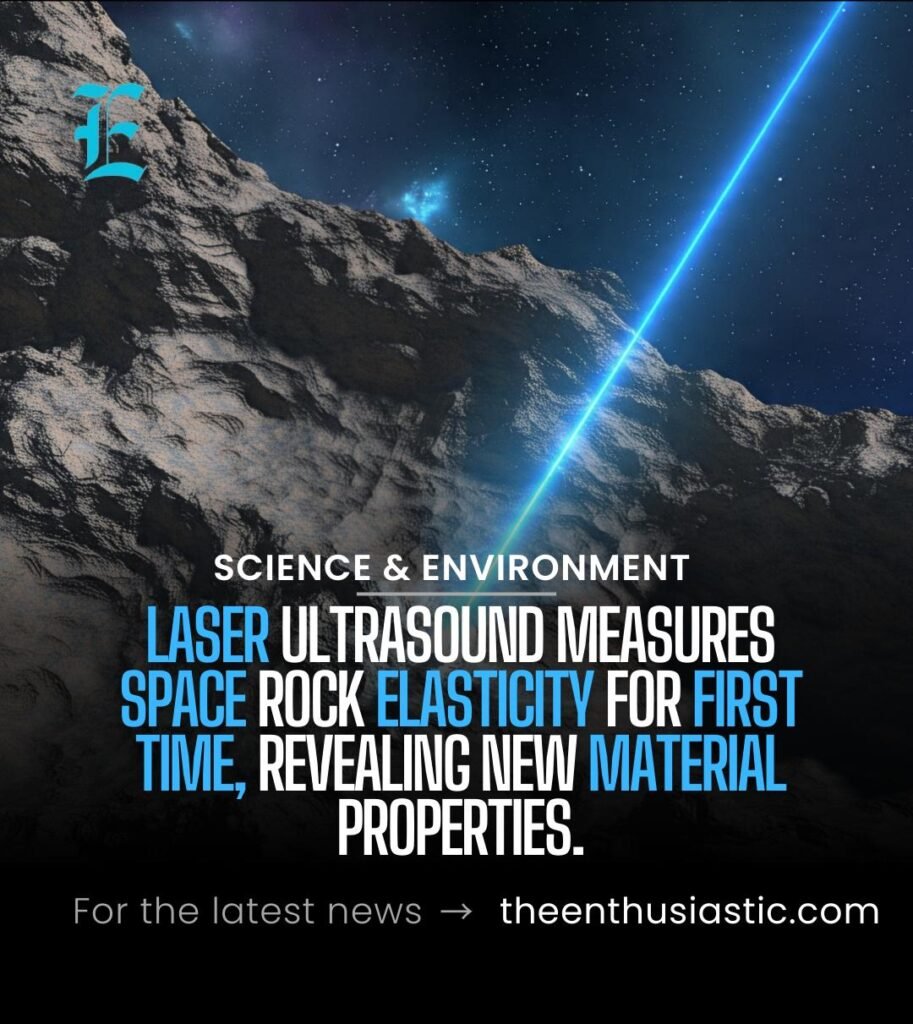Laser Ultrasound Measures Space Rock Elasticity for First Time, Revealing New Material Properties

Table of Contents
In a scientific breakthrough, researchers at the University of Nottingham have successfully measured the stiffness of space rock for the first time using a non-destructive laser ultrasound technique. This development provides a new window into the mechanical behavior of meteorites—ancient materials formed under the extreme conditions of space that are impossible to replicate on Earth.
Meteorites, composed of complex crystalline structures formed over millions of years, have long posed a challenge for scientists trying to analyze their mechanical properties. Traditional methods require specially grown single crystals to determine stiffness, a method that simply isn’t feasible with rare and naturally occurring space rocks.
However, scientists at the university’s Optics and Photonics Research Group have overcome this hurdle using an innovative approach known as Spatially Resolved Acoustic Spectroscopy (SRAS++). This laser ultrasound method, developed and patented by the University of Nottingham, uses lasers to generate and detect surface acoustic waves on the meteorite’s surface—eliminating the need for any physical contact or material damage.
Revolutionizing Meteorite Research
Lead researcher Wenqi Li emphasized the importance of this advancement, explaining that meteorites exhibit mechanical properties vastly different from synthetic iron-nickel alloys made on Earth. “They are formed under extremely rare conditions over millions of years and display intricate patterns and behaviors,” Li said. These materials hold valuable clues about the formation and evolution of planets in our solar system.
The findings were published in the journal Scripta Materialia and are expected to pave the way for deeper scientific exploration of space materials.
Accurate Results Without Destruction
Associate Professor Richard Smith noted that, until now, no non-destructive method existed for measuring the stiffness of individual crystals in the granular matrix of meteorites. The team’s results were compared to theoretical data from lab-made iron-nickel alloys, and the bulk mechanical properties derived from the SRAS++ measurements were found to be in strong agreement with existing values for the Gibeon meteorite—validating the technique’s accuracy.
Future Applications in Space and Materials Science
Professor Matt Clark from the university’s Faculty of Engineering expressed optimism about the future of this research. With the ability to analyze larger meteorite samples, scientists hope to map variations in mechanical properties from the center to the outer edges of meteorites. This could yield new insights into how these cosmic materials formed and evolved.
Beyond advancing our understanding of the solar system, the study has practical implications for developing advanced alloys and materials used in aerospace and space construction—fields where strength, durability, and lightweight performance are critical.
This pioneering work not only deepens humanity’s understanding of ancient cosmic materials but also demonstrates the growing role of laser-based technologies in transforming materials science.
